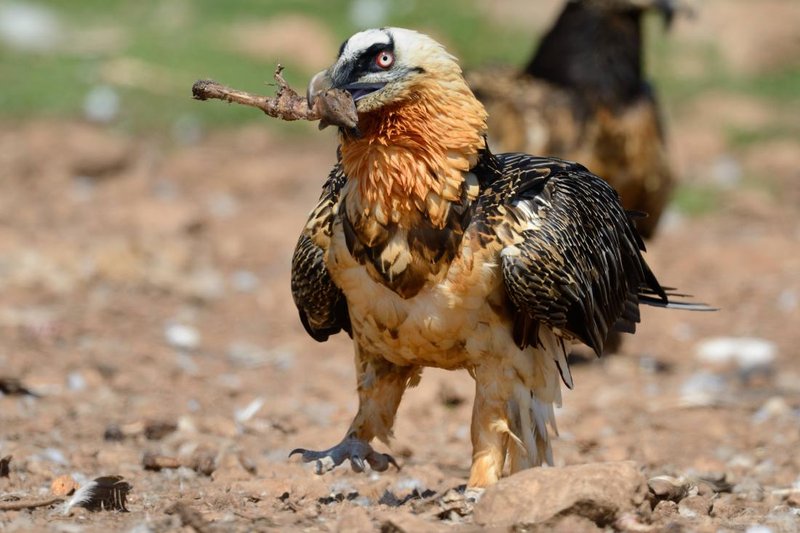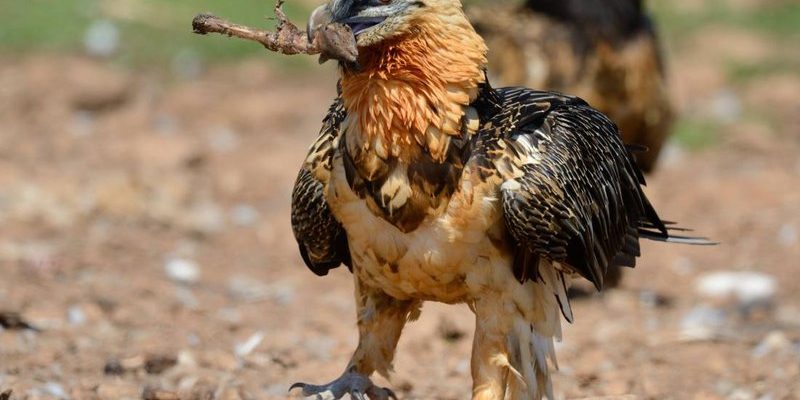
These magnificent creatures are more than just their unusual diet. They’ve crafted a variety of hunting strategies that showcase their intelligence and adaptability. If you’ve ever watched a predator stalk its prey, you know there’s more going on than just swooping in for the kill. In this article, we’ll dive deep into the bearded vulture’s unique dietary habits and the clever ways it hunts, giving you a well-rounded view of this remarkable bird.
What Do Bearded Vultures Eat?
The bearded vulture’s diet primarily focuses on **bones**, which is quite unusual for birds of prey. You might be wondering how they go about this. Unlike your average vulture that feasts on carrion, these birds prefer the harder stuff. They will eat the bones of dead animals like sheep, goats, and even large mammals. In fact, around **70%** of their diet comes directly from bones!
However, it’s not just about chewing on bones. Bearded vultures have a unique way of breaking them down. They’ll often drop larger bones from great heights onto rocky surfaces to shatter them into smaller pieces. This technique allows them to access the nutritious marrow inside. Think about it: the bird is not just eating; it’s cooking, in a way, using nature’s own tools.
It’s also worth noting that while bones are their primary food source, bearded vultures aren’t picky eaters. They will consume other animal remains when bones are scarce, showing their adaptability. They might snack on **small mammals**, or **discarded animal parts** while still keeping bones as their main course.
How Do Bearded Vultures Hunt?
Hunting for a bearded vulture isn’t just about using brute force; it’s an artful strategy. These birds are known for their **intelligence** and resourcefulness. To hunt, they often soar high above mountainous regions, scouting for potential food sources. Their keen eyesight allows them to spot carrion from miles away.
Once they identify a potential meal, bearded vultures will engage in a fascinating aerial display. They may hang in the air or perform spirals and dives to survey the area. Early morning is particularly ideal for hunting, as the winds are more favorable for soaring at higher altitudes. But, here’s the thing: they’re not just looking for any random bones. They know where to find animal carcasses, often hanging around known locations where other animals have died or been discarded.
Bearded vultures also have an impressive social strategy when it comes to hunting. They sometimes work in pairs or groups to take down larger prey or to defend a food source. This teamwork makes them more successful in securing their meals, proving that even in the bird world, two heads (or more) are better than one.
The Bone Dropping Technique
One of the most striking hunting strategies of the bearded vulture is their **bone-dropping technique**. Picture this: a bearded vulture flying high above a rocky cliff, clutching a large bone in its talons. It will then drop the bone onto hard surfaces to break it into smaller, digestible pieces. This technique is not just instinct; it’s learned behavior passed down through generations.
The age of the vulture plays a role here too. Young bearded vultures often experiment with different sizes and types of bones to figure out what works best. It’s like a chef trying out new recipes! The bird learns the perfect height and angle for dropping its meal, enhancing its chances of breaking the bone effectively.
Moreover, this bone-dropping isn’t just a means to an end; it’s crucial for their survival. The marrow inside bones is rich in fats and nutrients, providing essential energy. So, this impressive hunting behavior directly impacts their health and well-being.
Adaptability in Diets
One of the key strengths of the bearded vulture is its **adaptability**. While it primarily thrives on bones, it can adjust its diet based on what’s available in its environment. For instance, during harsh winters when food is scarce, they might switch to consuming **scavenged meats** or small mammals. This flexibility ensures they don’t go hungry, even when their preferred meal isn’t available.
You might even find bearded vultures rummaging through livestock remains or feasting on carcasses left behind by larger predators. Their wide-ranging diet helps them thrive in different habitats across Europe, Africa, and Asia, from rugged mountains to arid deserts. This ability to adapt is critical in an ever-changing ecosystem.
Let’s not forget their unique foraging behavior. They can often be seen following other scavengers to locate hidden food sources. By observing other birds, they can find meals without putting in as much effort. It’s nature’s version of teamwork, and it highlights their keen intelligence.
Conservation Status and Challenges
Despite their impressive adaptability and hunting skills, the bearded vulture faces significant challenges today. Habitat loss, poisoning from **animal carcasses**, and the decline of their natural food sources have put these birds at risk. In fact, they are considered **near threatened** in many regions. Protecting their habitats is crucial for ensuring their survival.
Conservation efforts are underway in various countries to support bearded vulture populations. This includes habitat restoration, monitoring their breeding sites, and educating local communities about the importance of these birds. The bearded vulture’s role in the ecosystem as a scavenger is vital; they help in cleaning up the environment and preventing the spread of disease.
It’s a tough world out there for these magnificent birds, but awareness and education can lead to meaningful change. By understanding their diet and hunting strategies, we can better appreciate the bearded vulture and advocate for its protection.
The bearded vulture is not just an extraordinary bird; it’s a testament to nature’s creativity and resilience. From its bone-centric diet to its innovative hunting strategies, this vulture showcases the power of adaptation. As we continue to learn about the world around us, it’s essential to recognize the delicate balance of our ecosystems. And by supporting conservation efforts, we can help protect these fascinating creatures for generations to come.
So, the next time you think of vultures, remember the bearded vulture and its crunchy culinary choices. These captivating birds remind us that there’s so much more to life than what meets the eye, and every creature has its unique role in the circle of life.

